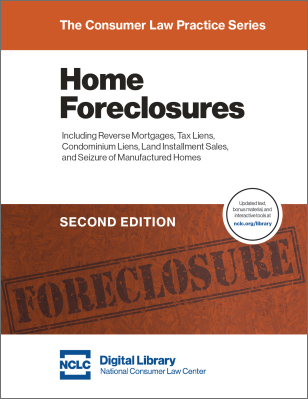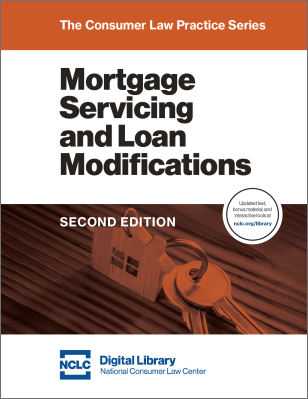Only about half the states are now accepting homeowner applications for payments from the Homeowner Assistance Fund (HAF), and few funds so far have been distributed. At the same time, because of the end of many COVID-19 related homeowner protections, large numbers of homeowners may soon face foreclosure.
This article explains which homeowners are eligible for HAF payments and explores solutions for the urgent problem that many eligible homeowners may lose their homes before they are able to receive the HAF payments which would have saved their homes.
How Homeowners Can Use HAF Funding
The American Rescue Plan Act of 2021—Public Law No. 117-2 § 3206 (Mar. 11, 2021)—authorizes the Department of Treasury to administer HAF and distribute $9.9 billion to the states, territories, and tribes to help homeowners facing hardships caused by the COVID-19 pandemic. Funds must be used by September 30, 2025 and target low-income and moderate-income homeowners based on area median income.
A Department of Treasury February 24, 2022, guidance explains that states can distribute HAF funding to prevent mortgage delinquencies, defaults, and foreclosures, loss of utilities, and displacement. Each state, territory, and tribe must establish criteria, process applications, and distribute funds. States can distribute funds so that homeowners can reinstate a delinquent mortgage, reduce the mortgage principal, or pay delinquent property taxes, past-due condominium, homeowner association fees, and past-due utility bills. Funds are sent directly to the mortgage servicer or other entity approved to receive payments, not to the homeowner directly.
HAF payments also can fund legal services and housing counseling. In addition, payments can reimburse states or local governments for funds already distributed to prevent mortgage delinquencies and utility terminations dating back to January 21, 2020 (i.e., the beginning of the pandemic).
HAF funds should be used to supplement existing options. Homeowners who can obtain forbearance and affordable repayment terms through their mortgage servicer should do so. HAF funds supplement relief from mortgage servicers and make assistance available for types of debt not covered by existing servicer programs, such as property tax and utility payments or homeowner association fees. HAF funds also help homeowners’ loans not covered by existing programs, such as private mortgage loans or manufactured home loans.
Homeowners Eligible for HAF Payments
Recipients of HAF funding must meet all these eligibility criteria:
- The homeowner experienced a COVID-related impact to their finances on or after January 21, 2020 (including a hardship that began before January 21, 2020 and continued after that date due to the pandemic). The hardship could include job loss, reduction in income, reduction in hours worked, increased costs due to healthcare, increased costs due to the need to care for family members, or other issues which have impacted the household’s income.
- The home is a one-unit to four-unit dwelling or a residential real property that includes a one-unit to four-unit dwelling.
- The homeowner lives in the home as their primary residence.
- The homeowner has an income equal to or less than 150% of area median income (AMI) or 100% of the median income for the United States, whichever is greater (this differs by region and household size).
- The mortgage loan is a conforming mortgage loan, and the loan amount cannot exceed limits set by certain government financing agencies. Conforming mortgage loans can be reverse mortgages or related to cooperatives, land contracts, and manufactured housing.
States Have Not Yet Distributed HAF Funding
In many states homeowners cannot even apply for HAF relief. While the Treasury Department has approved HAF plans for forty-seven states and twenty-three tribes, states cannot open their application portals until they finalize contracts with service providers, execute servicer collaboration agreements, and complete other administrative and logistical details. Only twenty-two states and two territories are accepting HAF applications. New York is a prominent exception; it has already stopped accepting new applications because it expects its HAF funds have been fully committed to present applicants. New York does allow homeowners to be added to a waiting list.
Delay in Distribution Unreasonably Damages Homeowners
Because of these ongoing delays, once homeowners can apply for HAF they may already be facing the initial stages of a foreclosure proceeding or be in active foreclosure. Funds may be received too late to prevent foreclosure or, at a minimum, to prevent additional foreclosure-related fees and charges added to loan accounts, which will make resolution of the delinquency more costly. One can anticipate large numbers of homeowners eligible for HAF who cannot access the funds in time to avoid a foreclosure or a foreclosure proceeding.
For example, around 650,000 homeowners are still in forbearance programs that provide a temporary pause in their monthly mortgage payments. As soon as these forbearance programs end, homeowners in such programs will have to work with their loan servicers to create a plan to repay the forborne payments. HAF will be vital in helping homeowners become current on their loans when their servicers do not offer affordable options to repay missed payments—but only if HAF payments can be received prior to the home being foreclosed.
This Problem Is About to Explode in Seriousness
This problem of a gap between an active foreclosure and receipt of HAF funds is a serious one—the number of foreclosures soon is projected to be staggering, with the expiration of federal and most state foreclosure moratoria and Consumer Finance Protection Bureau (CFPB) federal pre-foreclosure protections. For an updated state-by-state analysis of remaining state foreclosure moratoria, see NCLC’s Covid-19 State Foreclosure Moratoriums and Stays webpage.
For homeowners coming out of forbearance, options are available to delay or reduce payments for forborne mortgage payments and to avoid foreclosure. The options vary depending on the mortgage investor—Fannie Mae, Freddie Mac, VA, FHA, or Rural Housing Service. NCLC’s Mortgage Servicing and Loan Modifications Chapter 12 sets out these options and is currently free to the public. An NCLC article also summarizes the chapter and provides links to its applicable subsections.
Unfortunately, these options will not be of use to many homeowners. Homeowners who are at the end of their forbearance plan and do not have a sustainable post-forbearance plan option in place may face foreclosure as soon as they exit forbearance. If a homeowner is more than 120 days past due, the CFPB’s mortgage servicing regulations permit servicers to initiate foreclosure immediately after the end of the forbearance unless a borrower submits a complete application packet. NCLC’s Mortgage Servicing and Loan Modifications § 3.8 discusses the servicer’s responsibilities regarding loss mitigation applications. Few homeowners submit full loss mitigation applications today, however, because the industry has shifted to streamlined modifications that do not require homeowner applications. NCLC’s Mortgage Servicing and Loan Modifications §§ 3.8.2.10.5, 7.3.3.3 discuss these types of modifications.
Not surprisingly then a “first look” Black Knight report with January 2022 data found that foreclosure starts have already increased sharply. This rise will most likely continue as over 850,000 borrowers are seriously delinquent but are not yet in foreclosure and 379,000 borrowers have finished loss mitigation but remain past due.
A recent report from the Federal Reserve Bank of Philadelphia, finds 950,000 homeowners who are over 90 days behind on mortgage payments are not in forbearance and over half of those homeowners currently have no loss mitigation plan in place. Among homeowners with private-label and portfolio loans (30% of the mortgage market) and who are 90+ days delinquent, only 25% and 34% respectively are in loss mitigation options.
Mortgage Bankers Association (MBA) November, 2021 data indicate that at that time over three times the number of homeowners are seeking repayment options and payment reductions after a forbearance rather than being able to reinstate the loan by paying back the missed payments. HUD’s Neighborhood Watch database show that over 420,000 FHA homeowners are seriously delinquent. Among reverse mortgage homeowners, almost 30,000 older homeowners are in default on their property taxes, homeowners’ insurance, or other regular fees associated with owning their homes. More than 10,000 reverse mortgage homeowners already are in foreclosure, but only around 3,500 have requested a COVID-19 extension.
The risks are even greater for homeowners of color. The U.S. Census Bureau’s Household Pulse Survey (Jan. 26, 2022–Feb. 7, 2022) indicates that 3.3% of white homeowners reported being in a household that was behind on mortgage payments, compared to 7.8% of Black homeowners and 6.1% of Hispanic or Latino homeowners.
Limited Existing Protections from Foreclosure While HAF Applications Are Pending
Whether through legislation, a judicial order, or executive order, states can condition foreclosure activity on the lender or servicer providing meaningful information about the HAF program to homeowners and pausing the foreclosure process to give eligible homeowners a chance to access the funds. In this way, the lender benefits by receiving a lump sum payment and the homeowner benefits by bringing the loan current and avoiding foreclosure.
Nevertheless, of the five major investors in mortgage loans, only Fannie Mae, Freddie Mac, and FHA have taken any action, and these actions have been limited.
- Fannie Mae and Freddie Mac permit (but do not require) servicers to halt a foreclosure for up to 60 days when a homeowner is engaged in the HAF process. In sum, servicers have discretion to halt foreclosure at HAF application. See Fannie Mae, Single Family Servicing Guide, E-3.2-07, Impact of Engagement with a Mortgage Assistance Fund Program Provider (07/14/2021); FreddieMac, Single Family Seller Servicer Guide, Mortgage Assistance Funds (effective 12/08/2021).
- FHA allows a pause of the foreclosure process only if the homeowner has been approved for HAF funding. This means the foreclosure process will continue, and fees will accrue while the homeowner is waiting for a decision. See HUD, Federal Housing Administration, Frequently Asked Questions (Oct. 1, 2021) (enter “HAF” in the search box in the middle of the screen).
At present only five states have taken action to protect homeowners while HAF payments have not yet been distributed.
- An amendment to VT Supreme Court Administrative Order No. 49 (Feb. 7, 2022), effective February 22, 2022 and lasting until September 30, 2025, requires plaintiffs in foreclosure actions to provide notice to the defendant of the availability of federal funds under Vermont’s HAF program. Homeowners obtain an automatic sixty-day stay of foreclosure activity upon representation that they have submitted their HAF application and believe they meet the basic eligibility requirements for the program. Model language is set out in Appendix F to the Vermont Supreme Court order. The party bringing the foreclosure action must inform the court if they have knowledge that a HAF application is pending. A form Certification of Compliance with or Exemption of AO49 and a Notice to Homeowner Form can be found in Appendix E.
- The New Jersey Administrative Office of the Courts issued a Notice to the Bar (Dec. 8, 2021) that the Supreme Court has authorized homeowners to apply for a stay of a sheriff’s sale even after the statutory maximum number of stays has been reached if the homeowners affirm that they meet the HAF eligibility criteria. The court is preparing a pro se motion packet for homeowners to apply for the stay.
- The Massachusetts Homeowner Assistance Fund Collaboration Agreement (Nov. 15, 2021) requires servicers to halt any foreclosure proceedings once they have been notified the borrower has applied for HAF funds.
- The District of Columbia passed D.C. Code § 42–851.01, Foreclosure moratorium which implements a foreclosure moratorium for residential properties from March 11, 2020–June 30, 2022. Thereafter, from July 1, 2022, through September 30, 2022, no residential foreclosure or sale shall be initiated or conducted and no judgment foreclosing the right of redemption shall be entered if a homeowner applies for funds from state’s HAF program or a similar government fund established to assist homeowners affected by the COVID-19 public emergency or public health emergency. Proof of the application status is required.
- On December 27, 2021, the Maryland Commissioner of Financial Regulation issued an Industry Advisory Regulatory Guidance stating that in implementing the HAF program, “servicers should know that the Commissioner takes the position that the evaluation timing and dual tracking standards set forth in 12 CFR §1024.41 are considered applicable once a servicer receives notice that a borrower has applied for HAF.” In addition, the Maryland’s Homeowner Assistance Fund: FAQs for Mortgage Servicers (Feb. 7, 2022) from the Maryland Department of Housing and Community Development and the Office of the Commissioner of Financial Regulation states that “[t]he HAF program is considered a form of loss mitigation. As with any repetitive loss mitigation application under 12 U.S.C. §1024.41, a servicer is not required to delay the foreclosure process if the servicer previously complied with all requirements and the borrower has been delinquent at all times since the prior submission.”
Model Language for State Foreclosure Protection While HAF Applications Are Pending
NCLC has drafted model language to protect homeowners from foreclosure while they apply for HAF funds—one version for judicial foreclosure states and one for non-judicial foreclosure states, and each should be adapted to conform with a state’s unique foreclosure process. The language can be used in state legislation, an order from the judiciary, or in an executive order.
The language requires servicers to notify homeowners about HAF before a foreclosure is initiated, including how and where homeowners can apply for HAF funds. The model language also prohibits a servicer from initiating or proceeding with any foreclosure activity for sixty days when it receives notice from the state HAF administrator that a homeowner is conditionally eligible for HAF and has an application pending. This ensures that eligible homeowners will have time to apply and receive a decision on their application without fear that their home will be sold while they wait for a response. It also ensures that homeowners will not be charged foreclosure-related fees that would affect their eligibility for loss mitigation and increase the amount of funds needed from HAF.
Other Options for Homeowners Facing Foreclosure While Awaiting HAF Funds
Because HAF was authorized less than a year ago, there is no track record as to effective homeowner strategies for dealing with the time gap between the initiation of a foreclosure and the receipt of HAF funding. The following suggestions thus are largely untried.
Where the homeowner has applied for HAF funding and a foreclosure has been initiated, the agency handling the HAF distribution should be pressed to provide the servicer with notification of the application and to review the homeowner for priority treatment in approving the homeowner’s application and distribution of the funds. HAF’s primary purpose is to prevent foreclosure and a foreclosure proceeding is certainly a valid basis for a homeowner’s application to be expedited.
Ensure that the servicer has not violated any of the federal or state COVID-19 moratoria and protections in place for homeowners. Violation of a federal or state COVID-19 moratoria may be grounds for at least staying a foreclosure. See NCLC’s Home Foreclosures § 5.13a. Likewise, violation of a federal rule such as the temporary COVID-19 procedural safeguards under Regulation X that the CFPB put in place in August 2021 or general loan servicing rules under RESPA and Regulation X could be grounds to at least stay foreclosure activity. See NCLC’s Mortgage Servicing and Loan Modifications §§ 3.8.7.7, 3.12.5.
Bankruptcy may be a viable option to delay a foreclosure. The automatic stay will be instantly in effect upon a bankruptcy filing, preventing any immediate action in a foreclosure proceeding until the mortgage loan owner or servicer seeks and obtains permission from the bankruptcy judge to lift the stay. A homeowner can argue that HAF funds will soon be paid directly to the mortgage servicer, and this will provide the servicer with protection avoiding any necessity to lift the stay. For a general discussion of using bankruptcy to prevent foreclosure, see NCLC’s Home Foreclosures Chapter 9.
Foreclosures have historically been actions in equity. Despite extensive statutory regulation of foreclosures today, most states’ laws continue to recognize the equitable character of the foreclosure process. This is true even when the foreclosure is by power of sale, through provisions granting the mortgagor the right to petition the court to enjoin the foreclosure sale. See NCLC’s Home Foreclosures § 5.11.
Homeowners defending a judicial foreclosure should provide the court with as much information as possible about their potential receipt of HAF funding—has an application been made, does the homeowner meet the HAF eligibility requirements, has any initial decision been made, are HAF funds still available from the state, how will the HAF funds help cure the default, etc. A court adjudicating a foreclosure case has broad authority to adopt its scheduling to facilitate equitable resolution of the proceeding.
Homeowners in non-judicial foreclosure states will have to bring affirmative action seeking to delay the foreclosure until the homeowner can obtain the HAF funding. See NCLC’s Home Foreclosures §§ 5.2.3, 8.6, 8.7.



